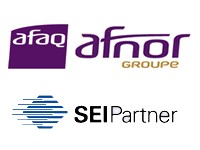Managing health and safety (OH&S) issues in the workplace represents an enormous challenge due to varying human nature, skills set, process complexity & local culture and have implications for everyone at the workplace. Effectively managing these issues means taking account not only of legal requirements, but also the well-being of your personnel in the organization.
Purpose of OHSAS 18001
Management of health & safety issues for an organization considering all interested parties concern is the main challenge of the business while working with significant hazardous process & risk. Achieving OHS performance with improved well being is the need to assure the regulatory bodies, customers and other stack holders due to high premium cost for any incident.
Certification to OHSAS 18001 show the commitment to the health and safety of employees, demonstrates your ability to manage risk & hazards associated with the activities and provide assurance to all concerned including customers and management that legal compliance is effectively managed.
Implementation of OHSAS 18001 policies gives systematic approach to minimizing health and safety risks and provide a framework for an organization to manage its legal compliance and improve occupational health and safety performance, including risk and opportunity identification, analysis, target setting, and measurement.
Organizations are improving the health & safety status by implementing the universally valid international standard along with best practices beside their own country specific health & safety legislations. OHSAS 18001 is basic and globally recognized standard for occupational health and safety management systems and is applicable to any organization in any business sector.
Benefits of OHSAS 18001
Implementing an effective occupational health and safety management system reduces the risk of harm to your employees and other personnel and reduces overall liability. Effective Management of Health and Safety risks will help:
- Demonstrate your commitment to the protection of employee, property and plant.
- Minimize the number of accidents and production time loss due to better control over hazards at the workplace
- Focus on employee safety results in a satisfied, motivated and highly productive work team.
- Increase control and reduction of hazards through the setting of objectives, targets and evolved responsibility.
- Maximize the well-being and productivity of all people working for the organization.
- Encourage better relationships with contractors and more effective contracted activities.
- Reduction in insurance premiums & workers compensation
- Demonstrates an innovative and forward thinking approach
- Ensuring legal compliance
- Improve safety culture & your reputation in the eyes of customers, competitors, suppliers, other stakeholders and the wider community.
More about OHSAS 18001
A certificate issued by third party registrar to demonstrates that your business system has been certified against requirements of OHSAS 18001 requirements. Implementation of OHSAS 18001 by setting up of internal processes gives confidence to management, employees & society at large about the protecting the health & safety and managing risk to human being.
OHSAS 18001 is an international standard for environmental management, applicable to companies of all sizes and types; certification to OHSAS 18001 provides a dynamic mechanism for the development of effective health & safety management system. “Plan-Do-Check-Act” principle based cycle, OHSAS 18001: 2007 specifies the most important requirements to identify, control and monitor the risk & hazards of any organization, and also how to manage and improve the whole system.
The OHSAS 18001 (Occupational Health and Safety Assessment Series) certification system is developed by an association of national standard bodies, group of certification bodies/registrars, and specialist of health & safety.
Features of OHSAS 18001
OHSAS series is designed to help organizations formulate occupational health and safety policies and objectives containing two documents viz. OHSAS 18001 – OHS Requirements & OHSAS 18002 which generally known as guidance document for implementation of OHSAS 18001. It is applicable to any organization, large or small, and within any business sector. OHSAS 18001 is largely aligned with the structure of ISO 14001 and is based on the two concepts of continual improvement and regulatory compliance.
OHSAS 18001 audit covers following:
- Policy statement (commitment of top management to improve OHS conditions)
- Hazard identification, assessment & control (evaluation of risk & its consequence on human being)
- Legal & other requirements (ensuring stringent compliance to the law of the land)
- Documented objectives & targets (continual improvement)
- Resources, Role, Responsibility & Authority (making responsible every one)
- Competence, awareness & training (ensures availability of right person all the time)
- Communication, participation & consultation (ensuring every one has to become part of OHS management )
- Documentation, Control of documents & records (for ensuring compliance)
- Operational controls(established safe working conditions)
- Emergency preparedness & response (check your preparation to mitigate any emergency or abnormal situation)
- Performance measurement & monitoring (ensuring health & safety parameters)
- Incident, Nonconformity, corrective & preventive action (provides mechanism for improvement)
- Management review (ensuring organization system is complied)
Eliminating risks and hazards
OHS hazards & its risk to human being are identified by a team of experts considering extent of application, nature of activity & conditions in which it operates. Identified risk are prioritized by making objective to reduce its significance level by giving a frame work of management programs which identify the resources & approach to achieve the desired goal. Timely review of achieved objective & new process area will direct the organization to set the next goal towards improvement in health & safety status.
Certification Process for OHSAS 18001
DQS Certification India appoints a competent & suitable auditor or team of auditors to audit the organization against the standard & scope requested by the clients. Client has to file an application seeking standard for which to be certified. Gap analysis may be performed first to check readiness for the auditee organization which help organization to improve upon. Routine surveillance audits are carried out to evaluate continual improvement in the validity period. A re-certification audit is performed after every three years to maintain continuity of the certification.


